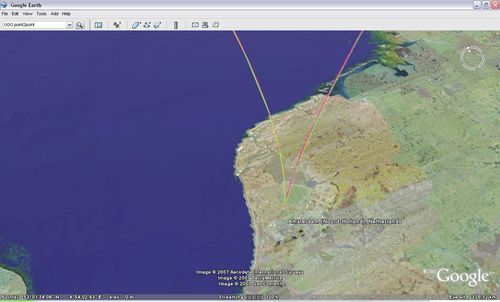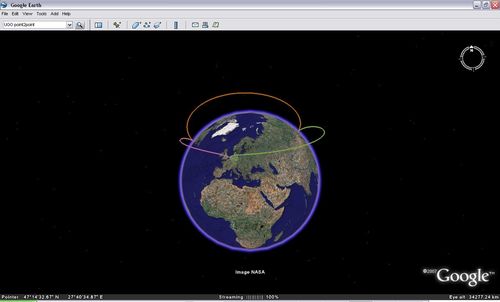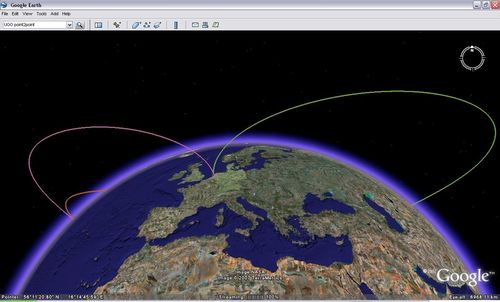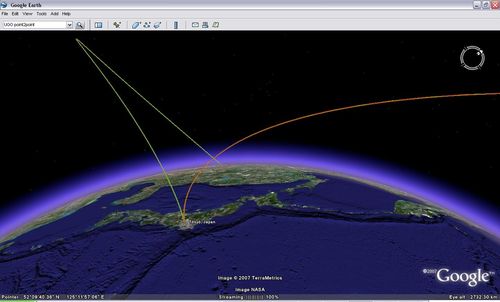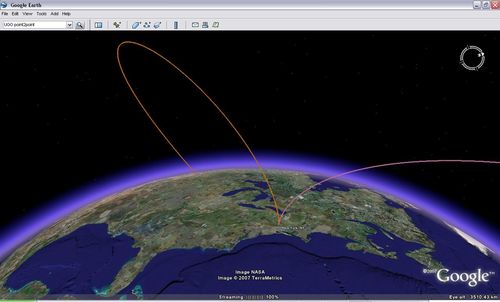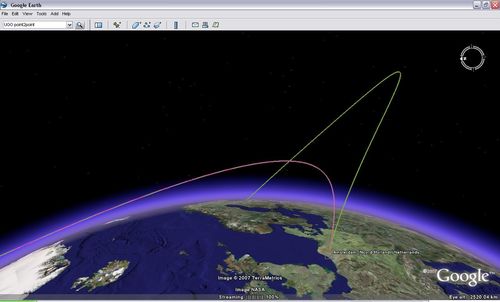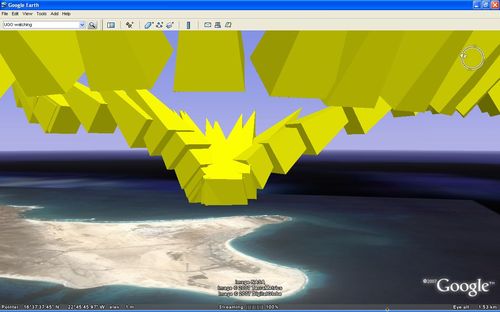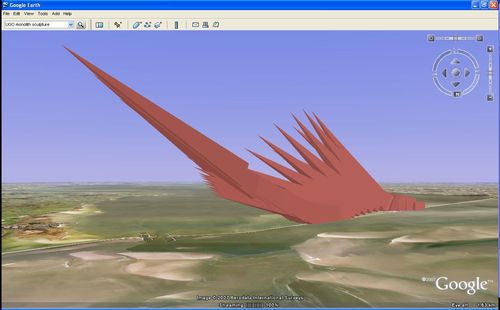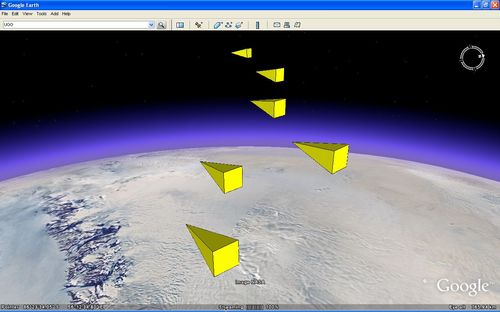UGO @ night
July 24, 2007 (17:41 CET)
A couple of screendumps using the Earth city lights overlay in the new NASA layer in Google Earth. This layer is hidden inside the Featured Content layer (I lost the original .kmz file. Seems this was one of the tests using a networklink on the mac side, where, due to a bug, it updates 15 times a second, giving a nicely smooth UGO. Can't use it (yet) for the app though cause it would quickly overload the server)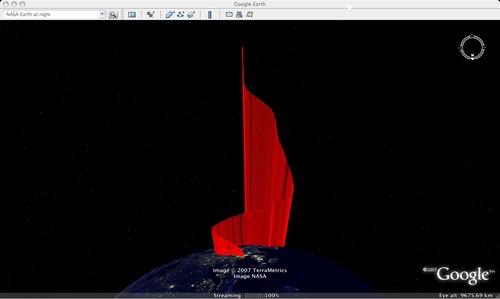
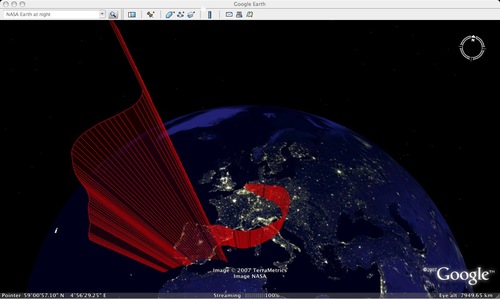
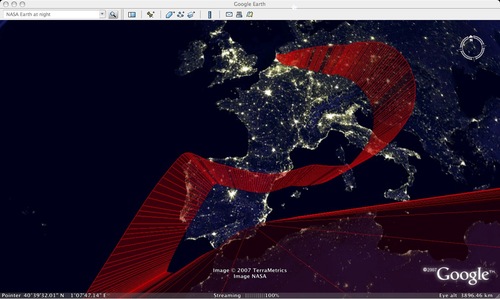
 del.icio.us
del.icio.us digg
digg furl
furl reddit
reddit Yahoo!
Yahoo!